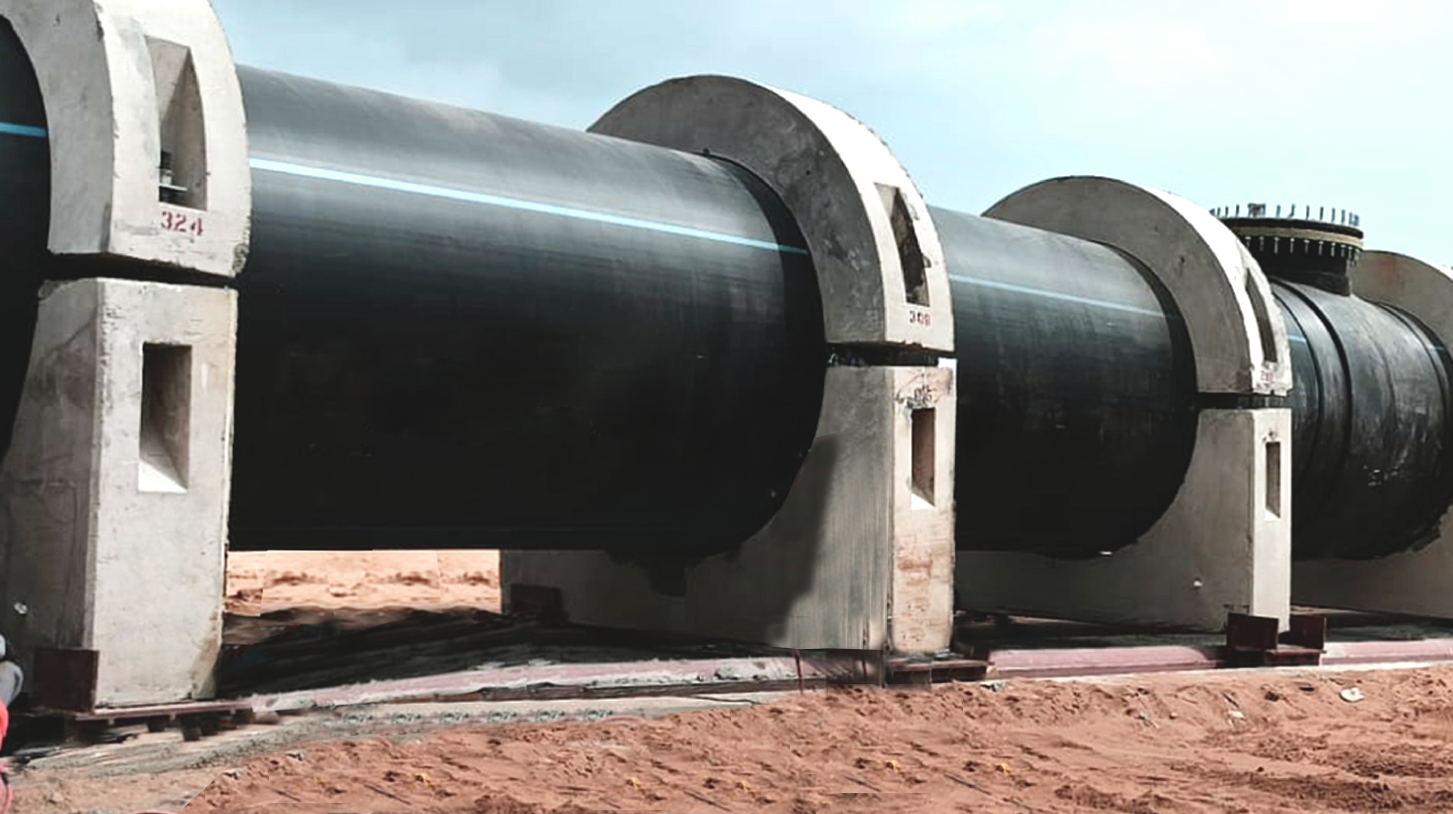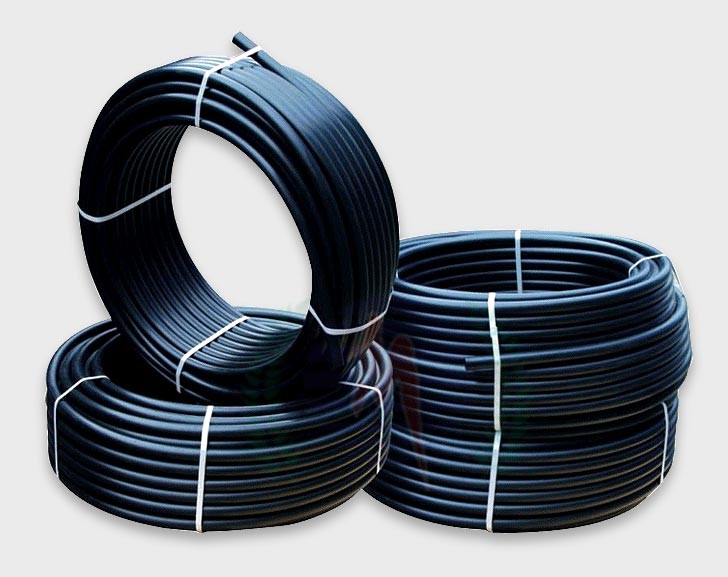Explore the Production Refine Behind High-Quality HDPE Pipeline and Its Applications
The manufacturing procedure of high-grade HDPE pipelines is detailed and methodical. It begins with the option of resources that boost efficiency. Following this, ethylene goes through polymerization to form resin, which is after that formed through extrusion. Quality assurance is vital, making certain that the last product satisfies strict criteria. The journey of HDPE pipes does not end with production. Their applications across numerous markets expose a broader relevance worth examining.
Recognizing HDPE: Properties and Advantages

High-density polyethylene (HDPE) is a flexible thermoplastic known for its longevity and resistance to different ecological factors. This material shows exceptional tensile strength, making it ideal for demanding applications. Its low-density framework adds to a light-weight item, promoting simplicity of managing and setup. HDPE additionally showcases impressive resistance to chemicals, which decreases degradation when subjected to harsh compounds.
The material's reduced moisture absorption even more boosts its longevity, making it suitable for usage in pipelines and tank. Additionally, HDPE is resistant to ultraviolet (UV) radiation, guaranteeing that products maintain their honesty even when subjected to sunlight. Moreover, its versatility permits for the production of intricate shapes without jeopardizing stamina. The eco-friendly nature of HDPE, often obtained from recycled products, includes in its appeal, promoting lasting techniques in manufacturing. Generally, these homes and advantages make HDPE a favored choice for different industrial and customer applications.
Resources Option for HDPE Production
The choice of raw materials for HDPE production is necessary to validate the last item meets the preferred specifications and top quality criteria. High-density polyethylene (HDPE) is mostly generated from polymerized ethylene, originated from nonrenewable fuel sources such as gas or unrefined oil. The quality of these feedstocks significantly affects the mechanical and thermal residential or commercial properties of the last HDPE.
Ingredients additionally play a considerable role in improving HDPE's performance, including antioxidants, UV stabilizers, and colorants, which enhance sturdiness and resistance to ecological aspects. The selection procedure should think about not just the chemical make-up of the raw products but likewise their handling attributes to guarantee efficient manufacturing.
The sourcing of raw products ought to prioritize sustainability and compliance with environmental regulations, as liable practices are imperative in today's market. Ultimately, mindful raw material selection lays the foundation for generating premium HDPE pipes appropriate for diverse applications.
The Extrusion Refine: Shaping HDPE Pipe
The extrusion process plays an important role in forming HDPE pipes, starting with precise product prep work techniques that ensure ideal circulation and consistency. Equally crucial is the style of the die, which straight affects the last measurements and surface high quality of the pipe. With each other, these aspects contribute significantly to the efficiency and top quality of HDPE pipeline production.
Product Preparation Methods
Efficient production of HDPE pipelines starts with thorough material prep work methods, specifically the extrusion process. During this stage, high-density polyethylene resin is very first dried out to eliminate dampness, guaranteeing excellent circulation characteristics. The resin is then fed into the extruder, where it undertakes home heating and melting, changing right into a viscous state. This home heating process is carefully controlled to preserve the material's integrity and performance. The molten HDPE is required via a die, forming it into a constant pipe form. Proper temperature management throughout extrusion is important, as it directly affects the material's homes and the end product top quality. As soon as shaped, the HDPE pipe is cooled down and reduced to specified sizes, ready for subsequent handling and applications.
Die Style Relevance
Precision in die layout plays a crucial role in the extrusion procedure of HDPE pipelines. The die serves as the final shaping device, directly affecting the pipeline's measurements, wall surface density, and surface coating. A properly designed die warranties consistent product circulation, reducing flaws such as irregularities and weak points. The geometry of the die should be maximized to fit the details residential or commercial properties of HDPE, including its viscosity and thermal actions throughout extrusion. Additionally, the cooling price of the product as it goes through the die can markedly affect the pipeline's architectural stability. Subsequently, spending in innovative die modern technology is essential for makers intending to produce high-quality HDPE pipelines that satisfy market requirements and client expectations.
Quality Assurance Steps in HDPE Production
Various elements influence the high quality of HDPE pipe manufacturing, reliable high quality control procedures are critical to assure consistency and dependability in the last product (Texas hdpe pipe manufacturer). Key high quality control techniques include strenuous material assessment, verifying that the raw polyethylene satisfies well-known standards for pureness and density. Throughout the extrusion procedure, specifications such as temperature level, pressure, and cooling time are very closely kept an eye on to keep dimensional precision and architectural honesty
Additionally, post-production screening is necessary; manufacturers frequently perform hydrostatic examinations to examine the pipe's strength and resistance to stress. Visual assessments for surface area issues additionally boost high quality guarantee. Certification from appropriate standards companies, like ASTM or ISO, offers an additional layer of reliability. By applying these comprehensive quality assurance procedures, producers can decrease issues, enhance performance, and ensure that the HDPE pipes fulfill the certain demands of different applications, ultimately resulting in client complete satisfaction and count on in the item.
Applications of HDPE Pipe Across Industries
HDPE pipes are made use of across different fields due to their sturdiness and adaptability. In water circulation systems, they ensure efficient shipment, while in wastewater administration, they give reliable remedies for waste transportation. Additionally, farming watering networks profit from HDPE's resistance to deterioration and flexibility, making it an ideal choice for modern-day farming practices.

Water Distribution Solutions
A significant number of markets rely upon high-density polyethylene (HDPE) pipelines for reliable water circulation systems. Recognized for their toughness and resistance to corrosion, HDPE pipes are commonly used in metropolitan water networks, agricultural watering, and commercial applications. Their light-weight nature promotes easy handling and setup, reducing labor costs and time. In addition, HDPE pipes can accommodate numerous stress levels, making them suitable for both low and high-pressure systems. hdpe pipe in stock Midland TX. The versatility of the material permits smooth integration into existing infrastructure, lessening the requirement for extensive excavation. HDPE's resistance to chemical seeping assurances that the water supplied remains secure and tidy, making it an optimal choice for preserving the top quality of drinkable water across various markets.
Wastewater Management Solutions
Efficient water distribution systems also lead the way for innovative wastewater monitoring options, where high-density polyethylene (HDPE) pipes play a considerable role. Prominent for their longevity and resistance to rust, HDPE pipes are perfect for delivering wastewater in various setups. Their flexibility permits simple installation in complicated atmospheres, minimizing the need for extensive excavation. Furthermore, HDPE's smooth interior surface area lowers rubbing, boosting flow rates and effectiveness. These pipes are also immune to chemical leaching, guaranteeing that pollutants do not compromise the surrounding environment. Industries, towns, and treatment centers significantly depend on HDPE pipes for their integrity and longevity, making them a recommended selection for contemporary wastewater administration systems. This adaptability underscores the important value of HDPE pipelines throughout numerous applications.
Agricultural Watering Networks
Agricultural watering networks profit substantially from the usage of high-density polyethylene (HDPE) pipelines, which offer efficient and trusted water shipment to crops. HDPE pipelines are lightweight, making them easy to transport and install, while their adaptability permits various configurations in varied surfaces. These pipelines demonstrate excellent resistance to rust, chemicals, and UV radiation, ensuring resilience in harsh farming environments. Furthermore, their smooth indoor surface reduces rubbing loss, optimizing water circulation and reducing power expenses connected with pumping. The durability of HDPE pipelines, commonly exceeding half a century, adds to reduce maintenance and substitute expenses. Subsequently, farmers progressively depend on HDPE pipes to improve irrigation effectiveness and advertise sustainable farming methods, ultimately bring about improved crop yields and resource conservation.
Future Fads in HDPE Pipeline Innovation
As the demand for sustainable and effective facilities expands, advancements in HDPE pipeline technology are poised to transform various markets. Arising patterns consist of the assimilation of clever modern technologies, such as sensors and IoT capacities, which promote real-time surveillance of pipe problems, lowering maintenance expenses and preventing leakages. In addition, the advancement of innovative production techniques, such as 3D printing, is enabling the manufacturing of complex, personalized pipe styles that accommodate specific project needs.
In addition, the emphasis on recycling and circular economy methods is driving the innovation of HDPE pipelines made from recycled products, improving sustainability. Improved jointing techniques, such as electro-fusion and mechanical installations, are also boosting installment efficiency and integrity. The expanding emphasis on ecological policies is pushing makers to embrace greener production procedures, making sure that HDPE pipes not only satisfy market standards yet additionally cultivate a more lasting future for framework development.
Frequently Asked Inquiries
Just How Does HDPE Compare to Other Plastic Materials?
HDPE outperforms lots of other plastic products concerning resilience, chemical resistance, and versatility. Its reduced density and high tensile strength make it ideal for get more info numerous applications, often going beyond choices in both efficiency and long life.
What Are the Environmental Effects of HDPE Manufacturing?
The environmental impacts of HDPE manufacturing consist of greenhouse gas discharges, energy consumption, and possible pollution from making procedures. Additionally, inappropriate disposal can lead to soil and water contamination, elevating concerns regarding lasting environmental impacts.
Can HDPE Pipeline Be Reused?
Yes, HDPE pipelines can be reused. Lots of centers approve made use of HDPE for processing, changing it into new items. This reusing adds to sustainability initiatives, lowering plastic waste while preserving sources and power in the production cycle.
What Is the Lifespan of HDPE Pipes?

Exactly How Do Temperature Level Variants Impact HDPE Pipe Efficiency?
Temperature level variations greatly influence HDPE pipe performance, affecting flexibility and stamina. Heats can lead to softening, while reduced temperature levels might cause brittleness, eventually influencing the pipeline's sturdiness and suitability for various applications in diverse environments.